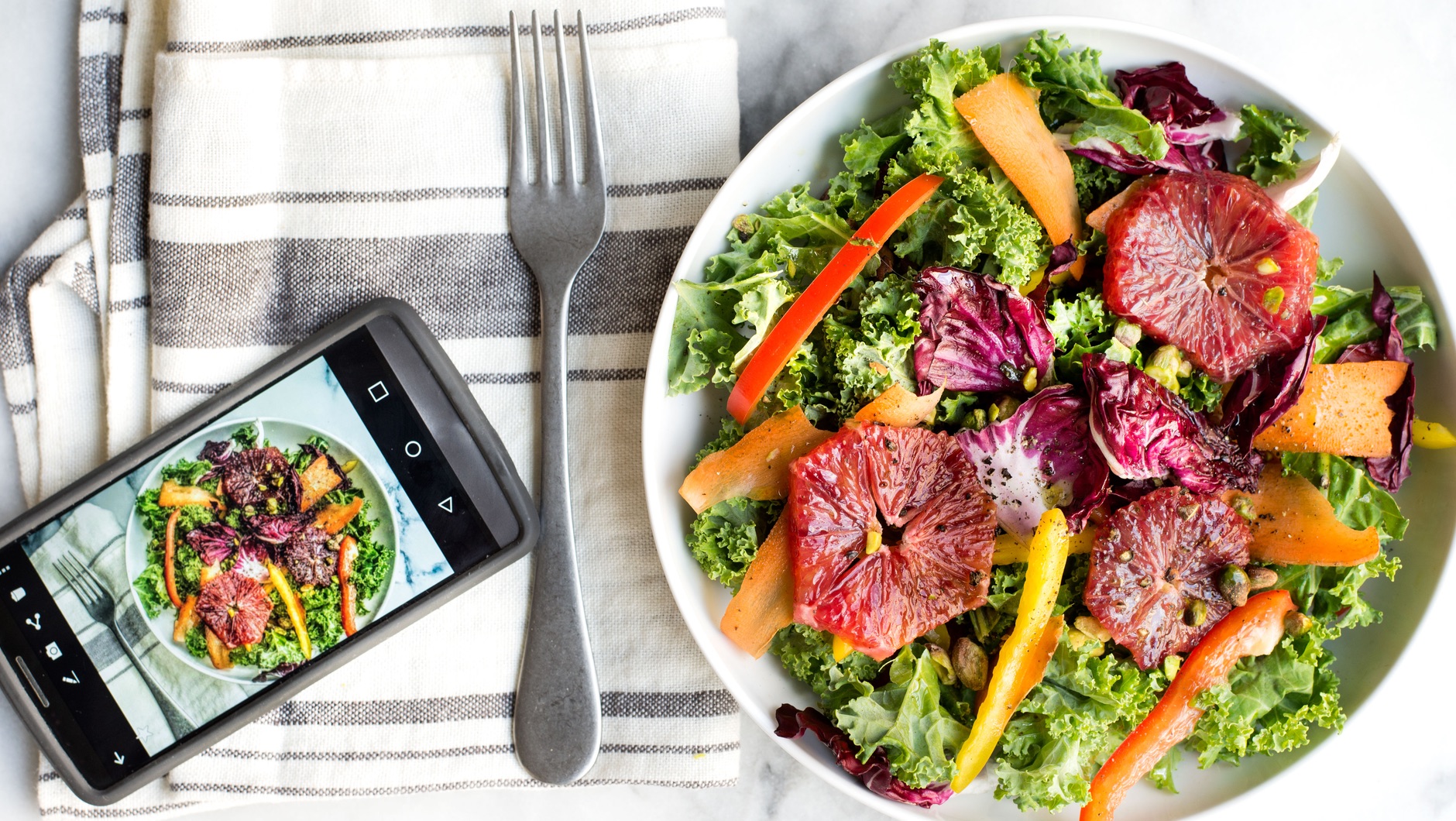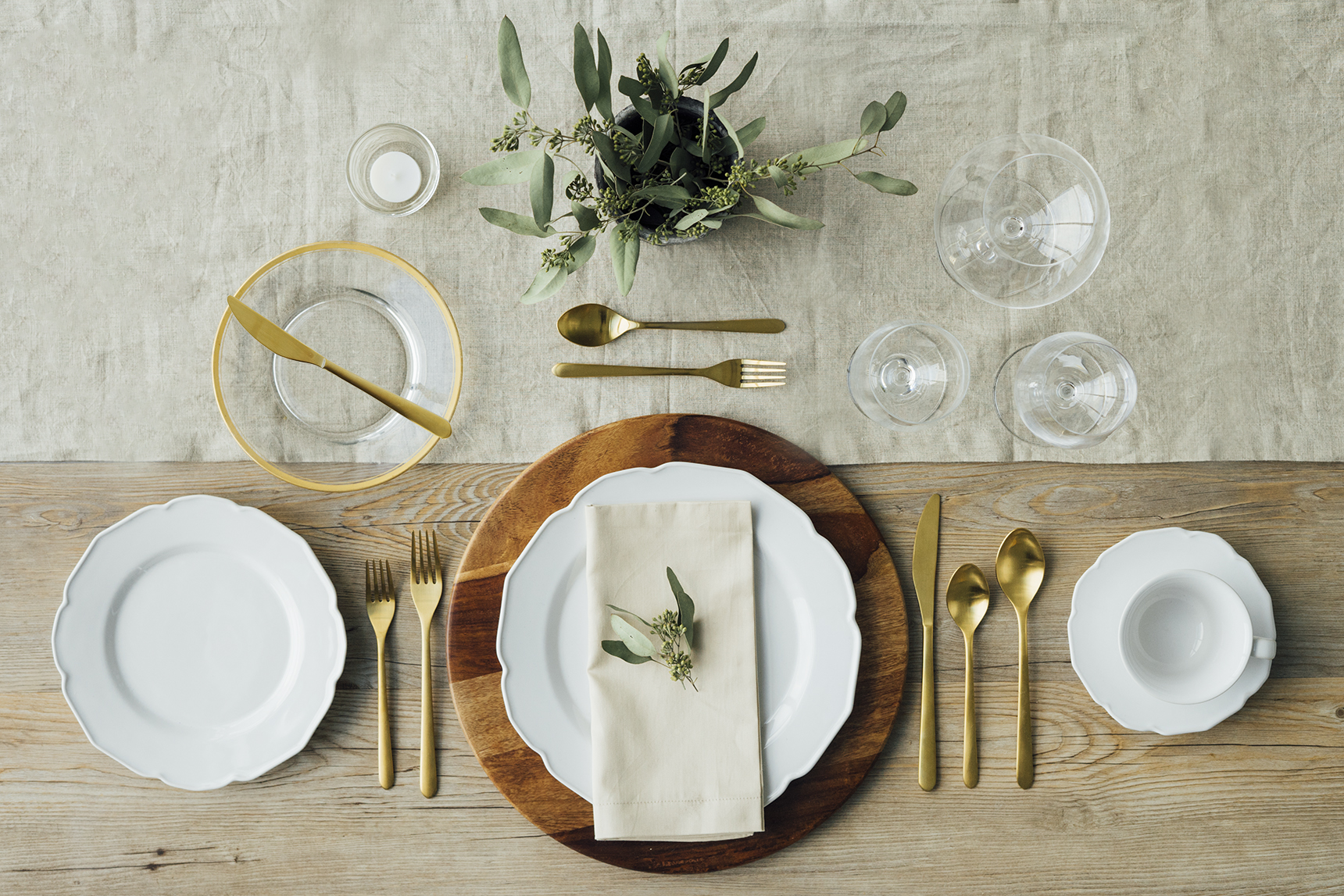Plating: You might have heard about it on your favorite cooking show, but in the restaurant biz, presentation is key! Behind all those epic Instagram food pics is a strategy and some cooking talent.
But you don’t need much to create picture-perfect food dishes in your own kitchen. Learn how to plate with our plating tips and techniques.
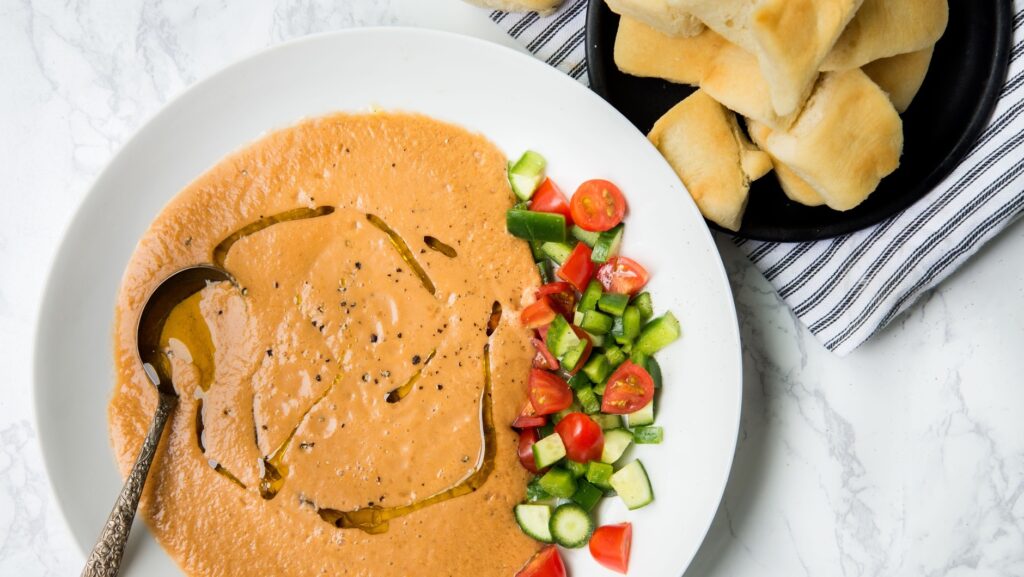
Pick the Perfect Plate
The plate is your canvas — make sure you have the perfect one.
- Scale your plate to the dish. Smaller foods should be placed on a small plate that leaves an appropriate amount of white space. You should be able to rest the end of your fork on the lip of a plate without touching the food.
- Pay attention to color contrast. When your food matches the color of the plate, it looks less appealing. White plates are considered the hallmark of high-end restaurants; however, darker colors, like navy or black, can offer a more romantic look. Homemade pottery is also great for more comfort food-type dishes, like stews or casseroles.
- Consider shapes beyond the conventional circle. Square and assymetrical plates can create a modern look.
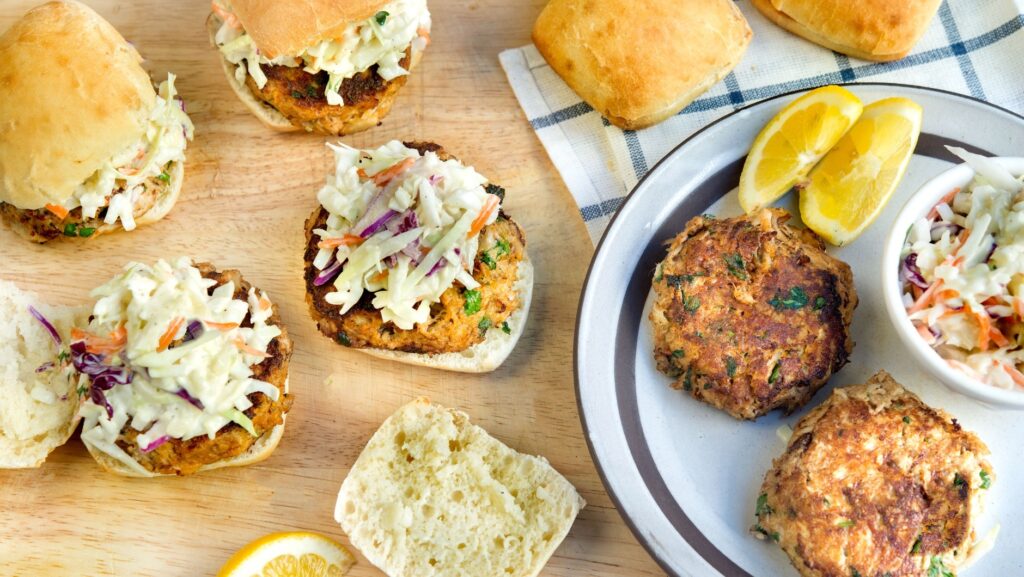
Play with Texture, Color & Shape
Plating is similar to any other visual art form. It’s pleasing to the eye to see a variety of complimentary textures, colors and shapes. There are two general rules of thumb: contrast and continuity.
- Contrast: Mix colors and textures to give your dish more depth and variety. Opposites like black and white, or grainy and smooth, help dishes pop on the plate. Shy away from more than four contrasting colors or textures to avoid arrangements that look too busy and disorganized.
- Continuity: Cook around a theme so all the dishes flow together. For example: prepare a delicious, colorful coleslaw to complement an entree, like these crab cake sliders.
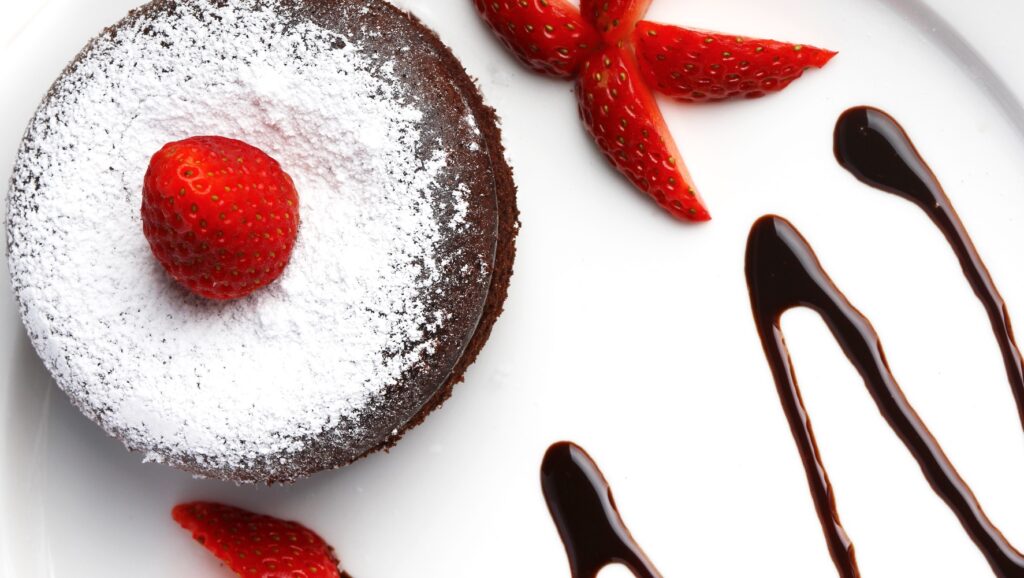
Position Your Dish Properly
Plating food in the center is the go-to move for symmetry. We recommend centering foods that are the same shape as the plate itself (e.g. pancakes on a round plate). Lasagna, salads and sandwiches also look great centered because the positioning shows off their layers.
For an edgier approach, try off-centering smaller dishes like appetizers or delicate entrees. If there are multiple components to the dish, create a dazzling effect by plating off-center and adorning the plate with drizzles and garnishes.
Desserts look great like this. Try a latticed pattern of drizzled syrup on a plate with a slice of cake off-centered and sliced fanned strawberries around the cake.
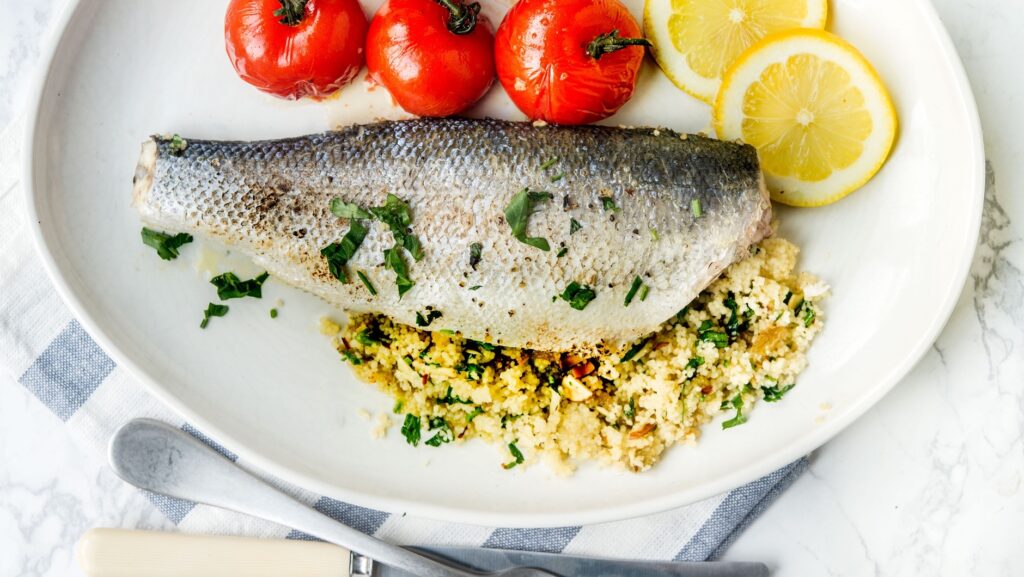
Work from the Inside Out
You wouldn’t put on a necklace or cufflinks before you choose your dress or shirt. When plating, you want to start with the entree and a side dish. This gives the main components of the dish the space they need. Here are few extra plating techniques.
- Add garnishes and additions that complement without crowding the plate.
- Chives are a safe bet for just about any savory dish. Dice them into tiny pieces and sprinkle on dish.
- Pea shoots add a refreshing bite with lots of aesthetic. Simply lay them on top for a stylish addition.
- Thin slices of radish or diced red pepper are a go-to for dishes that already have lots of green.
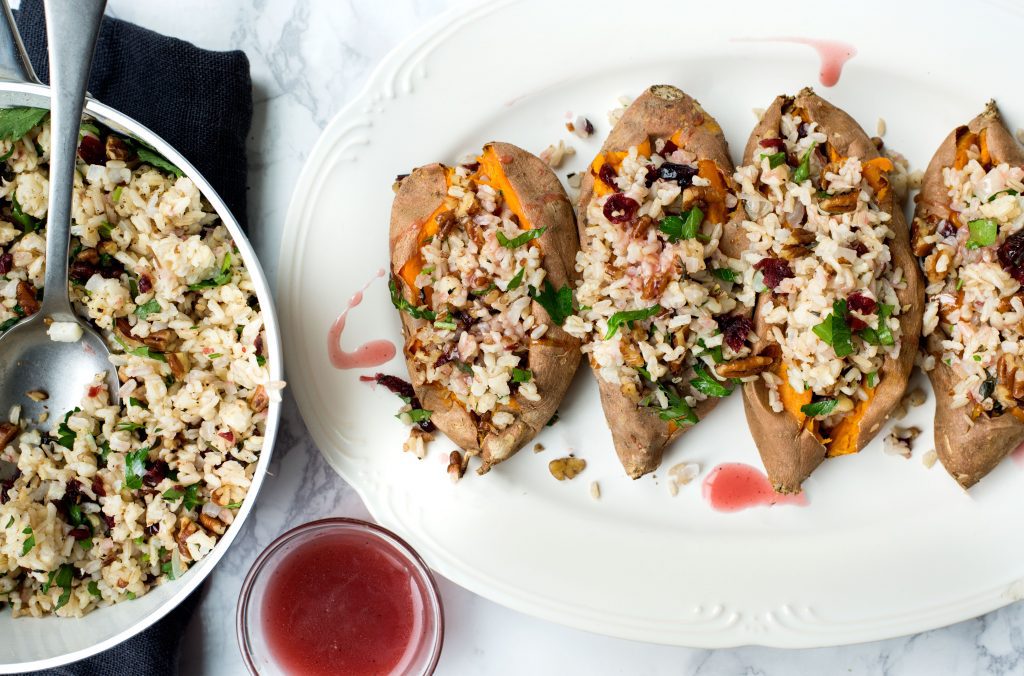
Make It Drizzle
You can create a visually stunning plate with just a few back-and-forth motions. Think of pesto drizzled on pizza, or caramel over a brownie. Just remember that the sauce itself needs to look good and complement the other flavors on the plate. Here’s some extra tips on how to decorate the plate:
- Invest in a few condiment squeeze bottles and get professional results with ease.
- Create dazzling displays with a spoon or a pastry brush.
- Try other garnishes like fresh herbs, powdered spices and finishing salts. Salt adds texture and a sparkle along with a pop of flavor. Herbs can be left as whole leaves or cut to a chiffonade.
Garnishes and sauces can add also color, texture, contrast and continuity. Keep this in mind for the big picture.



